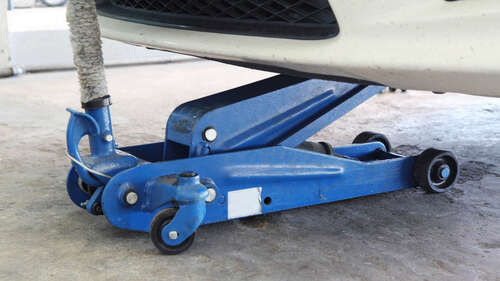
There are two main types of transmission jacks: low-profile and high-lift. A low-profile transmission jack, also called a transmission floor jack, is excellent when working on a vehicle supported by jack stands. They look similar to an alligator floor jack but are typically wider, have bigger wheels, and have built-in adapters on the lifting arm to cradle the gearbox securely.
Meanwhile, a high-lift transmission jack (or vertical-style jack) is suitable when working on a vehicle supported by a two or four-post lift. They have adjustable saddles or multi-caster platforms with chains or straps to secure the transmission. At the same time, it has a foot-operated pump to make transmission removal a one-person operation.
Choosing between a low-profile or high-profile transmission jack will depend on the application. If you raise the car with jack stands, a low-profile transmission floor jack is an excellent choice. However, a high-lift transmission jack is more suitable if you have a lift.
Regardless, make sure to double-check the lifting capacity of the transmission jack. Most cars have gearboxes that weigh about 100 to 200 pounds, but larger vehicles like trucks and full-size SUVs could have transmissions that weigh above 400 pounds. Keep this in mind before choosing a transmission jack.

